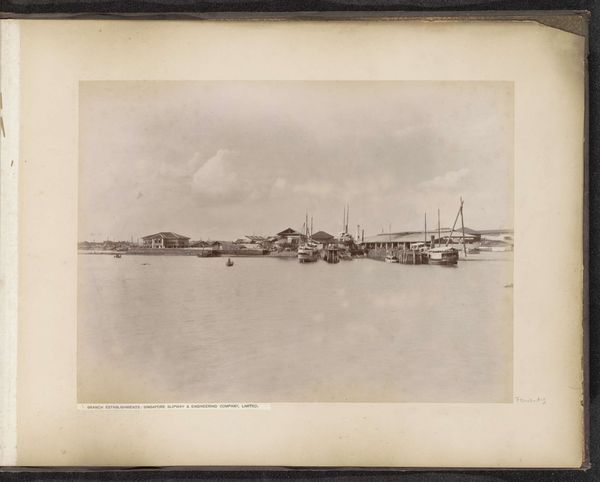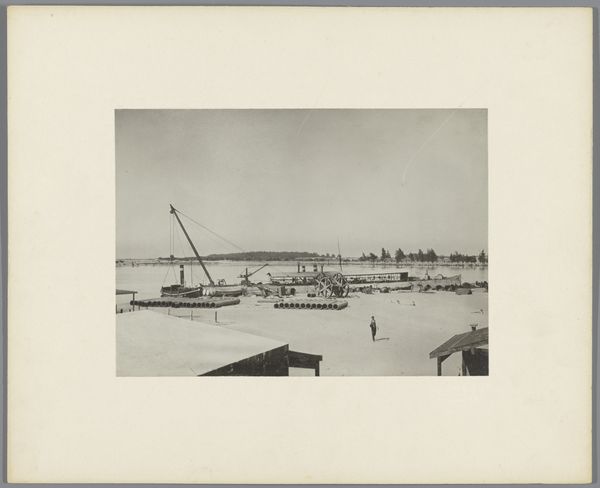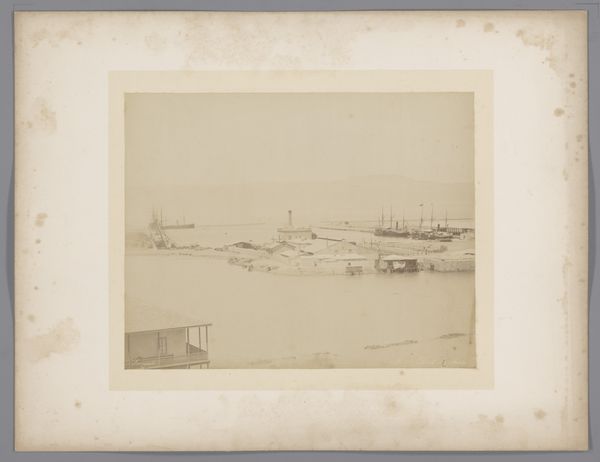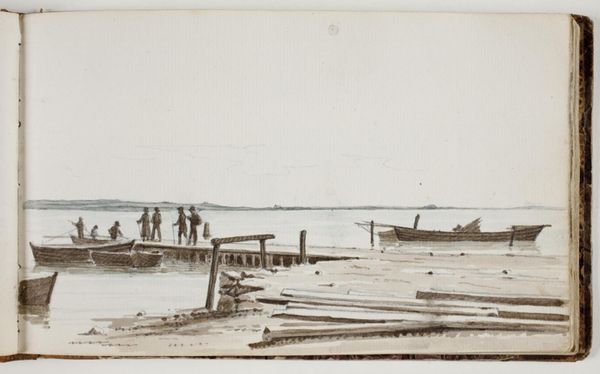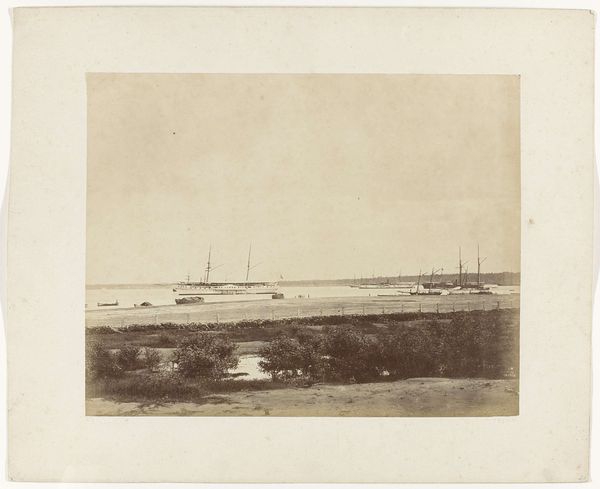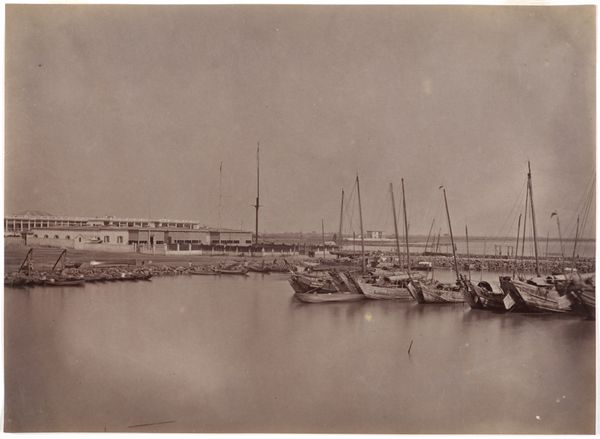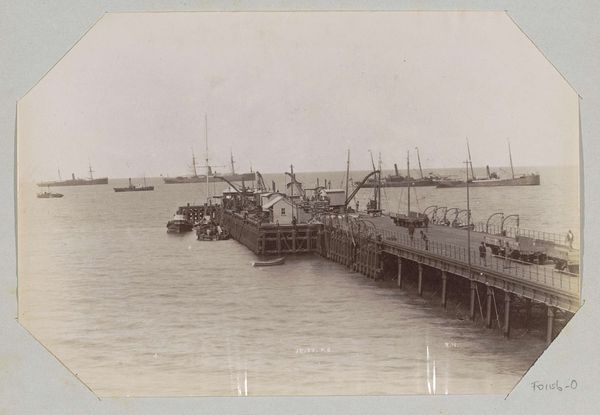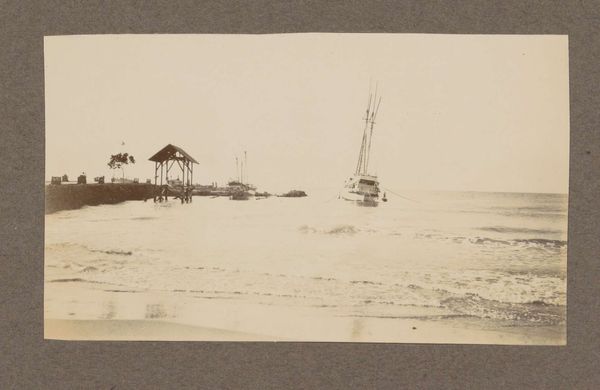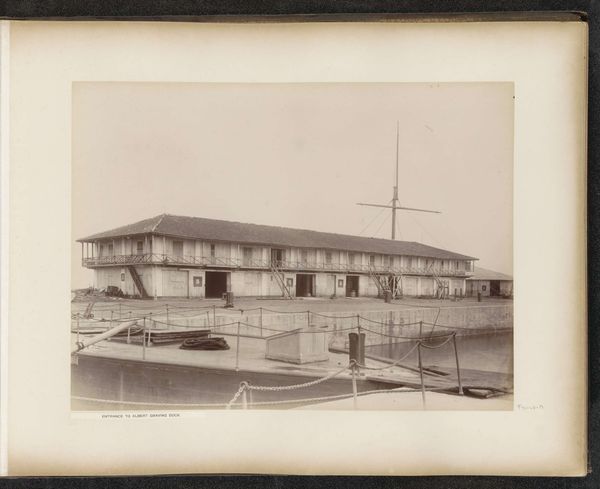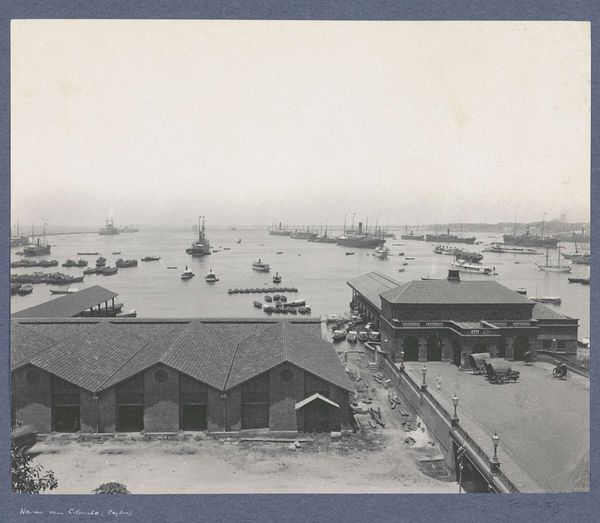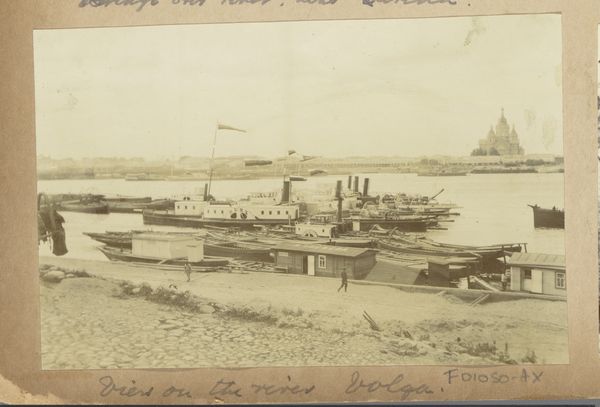
photography, albumen-print
#
landscape
#
photography
#
orientalism
#
cityscape
#
albumen-print
Dimensions: height 213 mm, width 280 mm
Copyright: Rijks Museum: Open Domain
This photograph captures the entrance of the Suez Canal, taken by C. & G. Zangaki, though the exact date remains unknown. The image presents a seemingly straightforward depiction of maritime activity. Yet, it’s crucial to understand this photograph within the context of 19th-century colonialism. The Suez Canal, inaugurated in 1869, was a project of immense strategic importance, drastically reducing travel times between Europe and Asia. But it was also a symbol of European power and control over global trade routes. The Zangaki brothers, of Greek and Egyptian heritage, operated a photography studio in Egypt, catering largely to European tourists. Their work, while documentary in style, often reinforced orientalist perspectives, framing Egypt as exotic and timeless, subtly emphasizing the dominance of the West. As you look at this tranquil scene, consider the labor, the political machinations, and the unequal power dynamics embedded in this waterway. It is a photograph that reminds us that even seemingly neutral images can carry a complex legacy.
Comments
No comments
Be the first to comment and join the conversation on the ultimate creative platform.

